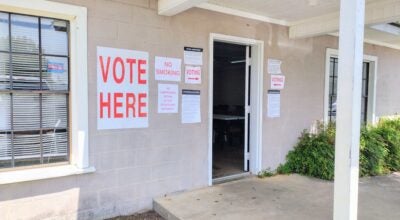Civil rights pioneer Mants passes away
Published 4:03 pm Wednesday, December 7, 2011
Civil rights pioneer and former Lowndes County Commissioner Bob Mants of White Hall died in Atlanta, Ga. Wednesday.
The information was provided to The Lowndes Signal by Lowndes County EMA Director and Mosses Mayor Walter S. Hill and confirmed by an individual taking calls for the family. She said Mants passed away today in Atlanta with a family member, but no other information was available at this time.
Mants, who is remembered for forging his own civil rights reputation, worked long and hard to help many people during the turbulent civil rights movement in Alabama and specifically in Lowndes County, according to Hill.
He said Mants is credited with helping to lead the first march from Selma to Montgomery to press for equal voting rights on March 7, 1965.
Hill said, Mants, 16, was the youngest member of the Atlanta Student Movement and celebrated his 68th birthday on April 25 of this year.
“Mants’ life and legacy is etched in several history books recounting his valuable contribution in and to the Civil Rights Movement in Alabama,” said Hill. “He will be remembered for his giant leap for humanity and civil rights and equal rights for all mankind. … A small man with giant heart of compassion for humanity and equality is passes from earth to glory.”
Hill, who knew Mants personally, said of his mentor, “He was instrumental in encouraging me to get into the political realm to improve the community. I was encouraged by his leadership, activism and his encouragement to me to remain committed to community service.”
According to exploresouthernhistory.com, Hosea Williams, John Lewis, Albert Turner and Mants and a group of roughly 300 people marched through Selma to the Edmund Pettus Bridge over the Alabama River.
The march went forward, and by the time the group reached the bridge, it included more than 600 people. On the opposite side, a force of Alabama State Troops and horseback mounted vigilantes waited.
As the marchers crossed the high arch of the bridge and descended to the side opposite, they were ordered to disperse. “The situation quickly got out of hand and volleys of tear gas were lobbed into the crowd of marchers. As confusion reigned, the crowd of protesters was attacked with clubs and fled back across the bridge in confusion. The Sisters of Saint Joseph at Good Samaritan Hospital and the staff of a local clinic treated hundreds for their injuries.”
The day, which came to be known “Bloody Sunday” proved a pivotal event in American history.




